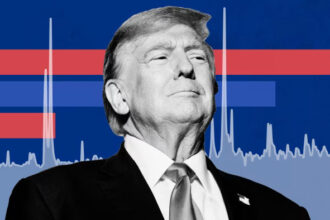On March 19, 2025, fresh data from the Communications Authority of Kenya (CA) revealed that Safaricom’s M-PESA, the titan of Kenya’s mobile money ecosystem, saw its market share slip by 2.3 points to 91% in Q4 2024 (October–December) from Q3’s 93.3%. This marks the fifth consecutive quarter of decline, driven by heightened interoperability and Airtel Money’s relentless push with lower fees and savvy promotions. As Airtel climbs to 8.9% from 7.6%, Kenya’s $309 billion mobile money market is witnessing a subtle but seismic shift. Here’s what’s happening—and what’s next.
M-PESA’s Slow Bleed: Numbers Tell the Tale
M-PESA’s dominance, once near-total at 97% in 2022, is eroding. The latest CA report pegs its Q4 2024 share at 91%, a 6-point drop over two years. Meanwhile, Airtel Money’s share rose from 7.6% to 8.9% in three months, adding roughly 550,000 users (assuming proportional growth from its 8 million base). Mobile money subscriptions hit 42.3 million—a 4.1% jump—lifting penetration to 82.1%, per CA’s sector stats. New accounts are increasingly favoring Airtel, hinting at a tipping point in user preference.
Interoperability, mandated since 2018 and deepened in 2022, lets users send cash across networks seamlessly. Airtel’s edge? Lower costs: sending KES 1,000 ($7.7) to other networks costs KES 11 ($0.085) versus M-PESA’s KES 13 ($0.093), and withdrawing it is KES 29 ($0.22) on Airtel—KES 2 cheaper than M-PESA’s KES 31. Add in Airtel’s transaction fee refunds as airtime, and the value proposition sharpens.
Airtel’s Playbook: Price, Promotions, and Presence
Airtel Money’s growth isn’t just about price—it’s execution. Partnerships with Naivas supermarkets have expanded its agent network, though it trails M-PESA’s 160,000-strong army with an estimated 40,000–50,000 agents (up from 30,000 in 2023, per Airtel’s rollout pace). Aggressive campaigns—like free Airtel-to-Airtel transfers since 2020 and a February 2024 policy scrapping the 7-day withdrawal code—have lured cost-conscious users. X posts reflect this shift: @startupsvibes asked, “Is this the start of a mobile money revolution?” while @Adonijah_Ndege noted Airtel’s “onslaught” on M-PESA’s grip.
M-PESA’s Enduring Muscle
Despite the dip, M-PESA’s scale is staggering: 34 million customers (80% of Kenya’s 42.3 million mobile money users) and 30 billion transactions worth KES 40 trillion ($308.8 billion) in 2024 dwarf Airtel’s 8 million users and a smaller slice of the pie. Its 160,000 agents and ecosystem—Lipa na M-PESA, Fuliza loans, M-Shwari savings—keep it entrenched. Safaricom’s Q3 2024 revenue from M-PESA grew 16.6% to KES 77.22 billion ($596 million), per its half-year report, showing resilience amid competition.
The Central Bank’s Wild Cards
Two Central Bank of Kenya (CBK) initiatives could jolt this landscape. Agent interoperability—promised by 2024 but stalled—would let users cash in or out at any agent, leveling the playing field. “It’s overdue,” grumbled @TaalamuNewsKE on X, citing CBK’s National Payments Strategy 2022–2025. More disruptive? The Fast Payment System (FPS), teased for 2025, enables instant cross-platform transfers between banks and PSPs. If rolled out by Q3, as hinted in CBK’s December 2024 roadmap, it could dilute M-PESA’s chokehold on high-value transactions (upped to KES 500,000 daily in 2024).
A Shifting Horizon in 2025
Airtel Money’s rise—doubling its share from 2.8% in June 2023 to 8.9% now—signals a maturing market where affordability trumps loyalty. Yet, M-PESA’s 91% share and $309 billion throughput suggest it’s far from dethroned. Posts on X lean bullish on Airtel’s momentum (@techloy: “A new player is gaining traction”), but skeptics note its 8 million users pale next to M-PESA’s 34 million. The FPS rollout could be the real game-changer, especially if tariff hikes under Trump’s second term (e.g., on tech imports) squeeze consumer wallets further—current sentiment sits at 57.9, per the University of Michigan’s March index.
Will Airtel hit 10% by Q2 2025? Can M-PESA counter with innovation? Safaricom’s April earnings and CBK’s FPS timeline will offer clues. For now, Kenya’s mobile money crown tilts—but doesn’t topple.














